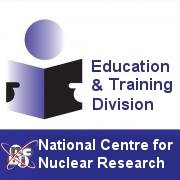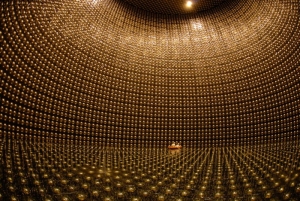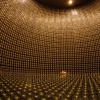T2K experiment has presented first results of research on CP symmetry violation
2016.08.08 11:36 - admin
T2K experiment
High Energy Accelerator Research Organization (KEK)
Institute for Cosmic Ray Research (ICRR), University of Tokyo
Japan Proton Accelerator Research Complex Centre (J-PARC)
Members of the T2K team re-analysed all their experimental data on neutrino-antineutrino oscillations using almost twice as much anti-neutrino events as were used back in 2015 to draw their preliminary conclusions. New results are in line with the trend noted already in 2015: preferential disappearance of muon neutrinos and unequal rate of incidence of electron neutrinos and electron antineutrinos.
Hypothetical violation of CP symmetry would manifest itself as a non-equal probability of neutrino/antineutrino oscillations. In the T2K experiment, beam of muon neutrinos is produced in Japan Proton Accelerator Research Complex (J-PARC, Tokai, Ibaraki, east coast of Japan) by beam of 30 GeV protons colliding with a cylindrical target. Intense beam of secondary particles is next focussed and filtered in strong magnetic fields produced by some magnetic horns. Focussed secondary particles decay to neutrinos or antineutrinos (depending on the sign of their electrical charge selected by magnetic horns). Neutrino/antineutrino beam monitored by some detectors located 280 m away the target is directed into Super-Kamiokande, a gigantic underground detector located in Kamioka at the west coast of Japan (295 km away Tokai).
Electron neutrino incidence rate observed in the T2K experiment is lower than the rate expected if CP symmetry would be the case: 32 electron neutrinos and 4 electron antineutrinos vs. 23 expected electron neutrinos and 7 expected electron antineutrinos for the latter case. Taking into account all possible oscillations of neutrino/antineutrino three flavours in the presently available T2K dataset and results of reactor measurements on decays of electron antineutrinos, the expected 90% confidence level for the ΔCP parameter ranges from 2π (i.e. the full possible range) to π, depending on the ΔCP true value and the selected hierarchy of neutrino masses. Experimental data indicate that the 90% confidence level for the ΔCP parameter must belong to the [–0.99π, –0.12π] range if the hierarchy of masses is normal or to the [–0.67π, –0.24π] range if the hierarchy of masses is reversed. The best fit point ΔCP = –0.5π is around the value corresponding to maximum violation of the CP symmetry, whereas ΔCP = 0 and ΔCP = π values (which would indicate CP symmetry) are outside the region favoured in the T2K experiment.
T2K is supported mainly by Japan Ministry of Culture, Sports, Science and Technology. The experiment has been developed and is run by an international team of more than 450 physicists from 61 research centres located in 11 countries (France, Spain, Japan, Canada, Germany, Poland, Russia, USA, Switzerland, UK, Italy).
The results would not be achieved without tireless efforts of the J-PARC staff. These people were delivering high quality beams in spite of plenty difficulties and adversities, including the powerful earthquake that hit eastern Japan in March 2011, seriously damaging J-PARC accelerators. The quake stopped the T2K experiment for about a year.
Search for CP symmetry violation in the T2K experiment helped to discover electron neutrinos in 2013; it was the first time a change of neutrino flavour in neutrino oscillations was observed. The discovery brought the Breakthrough Prize for Fundamental Physics granted in 2016 to Koichiro Nishikawa and the entire T2K collaboration. The recently presented results are based on data acquired for 1.51x1021 proton on target (POT) events, i.e. for 19% of the entire dataset planned in T2K. Chances that the observations reflect some statistical fluctuations rather than a real CP asymmetry are about 1 to 20, so more experimental data are needed to be sure. T2K collaboration expects to acquire the entire set of data (7.8x1021 POT) before 2021, taking into account that some improvements of the J-PARC main accelerator and the beam production facility have already been approved (http://t2k-experiment.org/2016/04/j-parc-main-ring-upgrade-approved/). Besides, they have proposed to prolong the data acquisition time till 2025 (when next generation neutrino experiments are scheduled to start) in order to increase the POT count to as much as 20x1021. That would allow to increase statistical significance of the CP symmetry violation data to 3σ (at least for a part of parameters used to describe oscillations).
More on the just published results and on the T2K experiment future perspectives may be found in a presentation to be given at 38th International Conference on High Energy Physics in Chicago. More on the experiment itself may be found on the http://t2k-experiment.org Webpage.
– The discovery that neutrinos and antineutrinos behave differently should help to understand why matter is dominating in the Universe over antimatter. If laws of physics were identical for both matter and antimatter, the Universe would be filled up only with annihilation radiation. But that’s not the case as we are existing. One has to draw a conclusion that “something” made matter slightly more abundant than antimatter and it survived – comments Dr. Justyna Łagoda from NCBJ High Energy Physics Division.


















